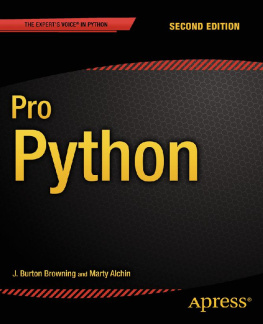Mariano Anaya - Clean Code in Python: Second Edition
Here you can read online Mariano Anaya - Clean Code in Python: Second Edition full text of the book (entire story) in english for free. Download pdf and epub, get meaning, cover and reviews about this ebook. year: 2020, publisher: Packt, genre: Computer. Description of the work, (preface) as well as reviews are available. Best literature library LitArk.com created for fans of good reading and offers a wide selection of genres:
Romance novel
Science fiction
Adventure
Detective
Science
History
Home and family
Prose
Art
Politics
Computer
Non-fiction
Religion
Business
Children
Humor
Choose a favorite category and find really read worthwhile books. Enjoy immersion in the world of imagination, feel the emotions of the characters or learn something new for yourself, make an fascinating discovery.
- Book:Clean Code in Python: Second Edition
- Author:
- Publisher:Packt
- Genre:
- Year:2020
- Rating:5 / 5
- Favourites:Add to favourites
- Your mark:
- 100
- 1
- 2
- 3
- 4
- 5
Clean Code in Python: Second Edition: summary, description and annotation
We offer to read an annotation, description, summary or preface (depends on what the author of the book "Clean Code in Python: Second Edition" wrote himself). If you haven't found the necessary information about the book — write in the comments, we will try to find it.
Mariano Anaya: author's other books
Who wrote Clean Code in Python: Second Edition? Find out the surname, the name of the author of the book and a list of all author's works by series.
Clean Code in Python: Second Edition — read online for free the complete book (whole text) full work
Below is the text of the book, divided by pages. System saving the place of the last page read, allows you to conveniently read the book "Clean Code in Python: Second Edition" online for free, without having to search again every time where you left off. Put a bookmark, and you can go to the page where you finished reading at any time.
Font size:
Interval:
Bookmark:

Clean Code in Python
Second Edition
Develop maintainable and efficient code
Mariano Anaya

BIRMINGHAM - MUMBAI
Clean Code in Python
Second Edition
Copyright 2020 Packt Publishing
All rights reserved. No part of this book may be reproduced, stored in a retrieval system, or transmitted in any form or by any means, without the prior written permission of the publisher, except in the case of brief quotations embedded in critical articles or reviews.
Every effort has been made in the preparation of this book to ensure the accuracy of the information presented. However, the information contained in this book is sold without warranty, either express or implied. Neither the author, nor Packt Publishing or its dealers and distributors, will be held liable for any damages caused or alleged to have been caused directly or indirectly by this book.
Packt Publishing has endeavored to provide trademark information about all of the companies and products mentioned in this book by the appropriate use of capitals. However, Packt Publishing cannot guarantee the accuracy of this information.
Producers: Tushar Gupta
Acquisition Editor Peer Reviews: Divya Mudaliar
Content Development Editor: Bhavesh Amin
Technical Editor: Karan Sonawane
Project Editor: Mrunal Dave
Copy Editor: Safis Editing
Proofreader: Safis Editing
Indexer: Tejal Soni
Presentation Designer: Ganesh Bhadwalkar
First published: August 2018
Second Edition: December 2020
Production reference: 1241220
Published by Packt Publishing Ltd.
Livery Place
35 Livery Street
Birmingham B3 2PB, UK.
ISBN 978-1-80056-021-5
www.packt.com

packt.com
Subscribe to our online digital library for full access to over 7,000 books and videos, as well as industry leading tools to help you plan your personal development and advance your career. For more information, please visit our website.
- Spend less time learning and more time coding with practical eBooks and Videos from over 4,000 industry professionals
- Learn better with Skill Plans built especially for you
- Get a free eBook or video every month
- Fully searchable for easy access to vital information
- Copy and paste, print, and bookmark content
Did you know that Packt offers eBook versions of every book published, with PDF and ePub files available? You can upgrade to the eBook version at www.Packt.com and as a print book customer, you are entitled to a discount on the eBook copy. Get in touch with us at customercare@packtpub.com for more details.
At www.Packt.com , you can also read a collection of free technical articles, sign up for a range of free newsletters, and receive exclusive discounts and offers on Packt books and eBooks.
Mariano Anaya is a software engineer who spends most of his time creating software and mentoring fellow programmers. Mariano's primary areas of interest are software architecture, functional programming, and distributed systems. He was a speaker at Euro Python in 2016 and 2017, and FOSDEM 2019. To find out more about him, you can refer to his GitHub account with the username rmariano.
Dedicated to my family and friends, for their unconditional support.
Tarek Ziad has been a Python developer for a long time. Back in the old days, he founded the French Python User group (AFPY) and was involved in the language development around packaging. He has written books about Python in both French (his native language) and English.
Tarek worked at Mozilla for over a decade, building tools and services, leveraging Python's awesomeness in projects at scale. He now works as a principal engineer at Elastic.
This book is suitable for all software engineering practitioners who are interested in software design or learning more about Python. It is assumed that the reader is already familiar with the principles of object-oriented software design and has experience writing code.
It will appeal to team leads, software architects and senior software engineers who want to learn good Python coding techniques to create projects from scratch or work on their legacy systems to save costs and improve efficiency.
The book is organized in such a way that the content is in increasing order of complexity. The first chapters cover the basics of Python, which is a good way to learn the main idioms, functions, and utilities available in the language. The idea is not just to solve some problems with Python, but to do so in an idiomatic way.
Experienced programmers will also benefit from the topics in this book, as some sections cover advanced topics in Python, such as decorators, descriptors, and an introduction to asynchronous programming. It will help the reader discover more about Python because some of the cases are analyzed from the internals of the language itself.
Scientists using Python for data processing can also benefit from the content of this book, and to that end, several parts of the book are dedicated to setting up projects from the ground up, in terms of tools, configuration of environments, and good practices to release software.
It is worth emphasizing the word "practitioners" in the first sentence of this section. This is a book that takes a pragmatic approach. Examples are limited to what the case study requires but are also intended to resemble the context of a real software project. It is not an academic book, and as such the definitions made, the remarks made, and the recommendations are to be taken with caution. The reader is expected to examine these recommendations critically and pragmatically rather than dogmatically. After all, practicality beats purity.
Chapter 1, Introduction, Code Formatting, and Tools, is an introduction to the main tools the reader needs to set up a development environment in Python. We cover the basics a Python developer is recommended to know to start working with the language effectively. It also includes some guidelines for maintaining readable code in the project, such as tools for static analysis, documentation, type checking, and code formatting. Having a common understanding of coding standards is a good thing but relying on good intentions only doesn't scale. That's why the chapter concludes by discussing tools to work more effectively.
Chapter 2, Pythonic Code, looks at the first idioms in Python, which we will continue to use in the following chapters. We cover the particular features of Python, how they are meant to be used, and in this chapter, we start building knowledge around the idea that Pythonic code is in general of much better quality.
Chapter 3, General Traits of Good Code, reviews general principles of software engineering making the focus on writing more maintainable code. With the knowledge gained from the previous chapter, we take a look at general clean design ideas, and how they can be implemented in Python.
Font size:
Interval:
Bookmark:
Similar books «Clean Code in Python: Second Edition»
Look at similar books to Clean Code in Python: Second Edition. We have selected literature similar in name and meaning in the hope of providing readers with more options to find new, interesting, not yet read works.
Discussion, reviews of the book Clean Code in Python: Second Edition and just readers' own opinions. Leave your comments, write what you think about the work, its meaning or the main characters. Specify what exactly you liked and what you didn't like, and why you think so.

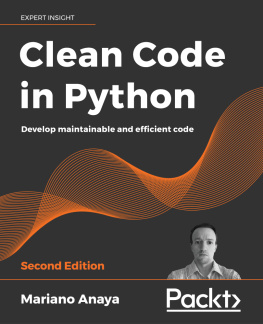



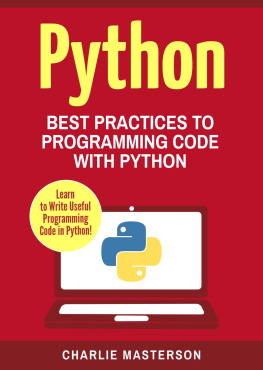
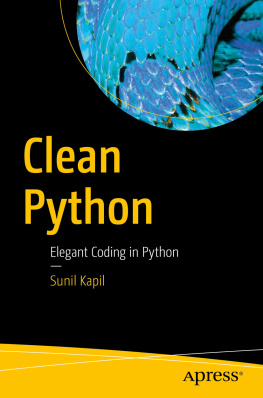

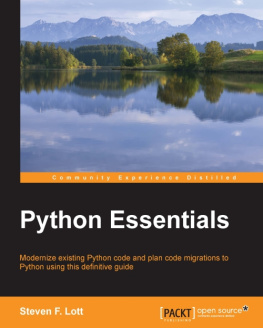
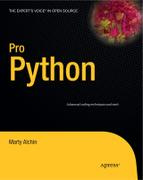
![Joannah Nanjekye [Joannah Nanjekye] - Python 2 and 3 Compatibility: With Six and Python-Future Libraries](/uploads/posts/book/124063/thumbs/joannah-nanjekye-joannah-nanjekye-python-2-and.jpg)
